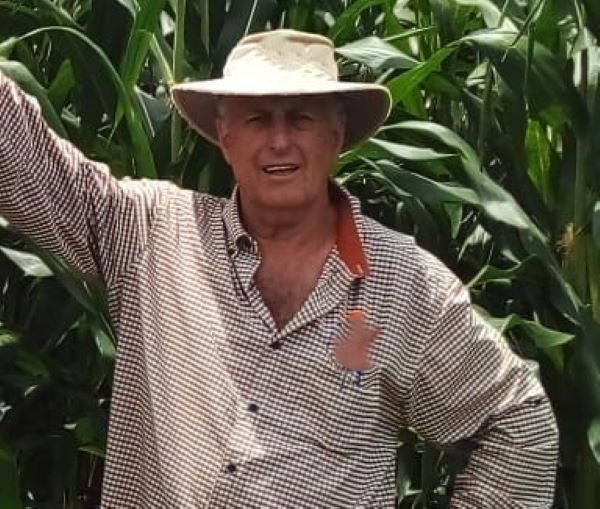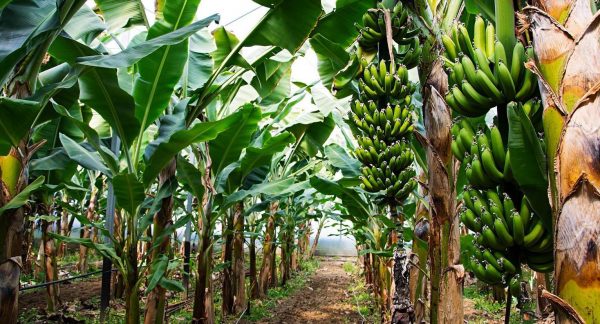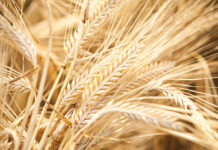We recently caught up with Dr Mike Barrow to discuss the reintroduction of maize genetics into modern breeding programs, particularly for small-scale farmers. Dr Barrow worked as a Maize Breeder for Pannar for 37 years. His numerous hybrids were widely sold in Africa within the small-scale sector. For over three decades, Dr Barrow also pioneered a Maize Streak Virus (MSV) screening protocol, resulting in the release of many MSV-resistant hybrids In his spare time, he is an avid indigenous nurseryman and landscape artist.
The dominance of American and European genotypes in the market
Over 30 years ago, when Dr Barrow was working on his PhD, a diversity of traditional African maize cultivars existed, but their availability has dwindled significantly. Dr Barrow says that in South Africa’s maize market, American and European genotypes hold dominant sway, primarily due to the influence of American companies. These companies have established a firm grip on the SA maize market, introducing many European and American maize varieties, while relegating the once prevalent old African genotypes to scattered areas across the continent.
“My theory on the evolution of the maize seed trade is that 30 to 40 years ago, many locally-owned South African companies sold maize hybrids to South African farmers, who planted approximately 40,000 seeds a hectare. They were tall, reasonably tropical-type plants, often with two cobs.
Then, the large European and American companies came in, and they were all owned by large companies. These companies bought up South African seed companies, then said to the South African seed companies, ‘okay, you’re selling 40,000 seeds a hectare, and we need to bump that seed number up and increase our sales’. This objective resulted in breeding smaller plants with smaller cobs that allowed a larger number (+/- 70,000 to 90,000) of plants per hectare, leading to greater overall yield. The US and European genetic influence thus resulted in increased yields but at a financial and possible environmental cost.”
Less resistance = more chemical sales
Dr Barrow’s theory then gets more nefarious. He suggests that because the large pharmaceutical companies needed to sell chemicals, they pushed out the traditional South African hybrids (with natural disease resistance that required no fungicide sprays) in favour of hybrids that are highly susceptible to all the African diseases. American genetics now require two to four expensive fungicide sprays each season.
“It was like when the Europeans got to America, and influenza wiped out the local population,” Dr Barrow said, “So we now have hybrids being marketed in South Africa, nearly from all American backgrounds and highly susceptible to diseases. The American seed companies’ (owned primarily by large pharmaceutical companies) main marketing emphasis is selling agrochemicals. They’re making lots of money, and the farmers are now trapped between a rock and a hard place as they have to spray three or four times a season with expensive chemicals in order to control plant diseases, which can seriously reduce maize yields if left uncontrolled.”
And when those particular chemicals cease to work as these diseases mutate (as fungi do), their scientists come up with new chemicals that inevitably are more expensive than the previously used chemicals.
The long-term effects of chemical-driven approaches on the environment
“I trained as an entomologist, developing resistance to MSV and the African Maize Stalk Borer in maize. My major concern with all the fungicide spraying going on is that nature has a marvellous way of getting around things. And soon, the major diseases will not be controlled by these sprays. Then, we’ll be faced with variants of these diseases that will not be effectively controlled by the current crop of fungicides. As a maize breeder developing mutual multi-gene resistance to common plant diseases, I don’t want to be faced with a continually changing or evolving species of fungi, bacteria or viruses. A resistant maize hybrid would be of great financial benefit to farmers in addition to having no effect on the environment.”
“I’ve dealt with agriculture and nature for a long time. Nature finds a way around, that’s for sure,” Dr Barrow said. For example, he’s encountered a weed that glyphosate cannot kill as it has become resistant. “It’s happening worldwide that plants are working their way around chemicals. It’s inevitable. It might be a short time, it might be a long time, but it’ll happen.”
But what about the small-scale market?
There are approximately 2.5 million smallholder farming households in South Africa, compared to 35,000 commercial farming units. So, where do they fit in?
“Small-scale farmers aren’t going for 15 tonnes a hectare; they’re going for one or two tonnes a hectare, which will feed their family for the whole season, so they don’t need huge genetics. They like big cobs, big kernels, and sweet maize. The tip of the cob has got to be closed so the birds can’t get in there. They appreciate variable maize hybrids and open-pollinated varieties (OPVs), which have cobs that ripen at different stages, allowing them to reap green maize throughout the season, and then they harvest the remaining grain once the crop has dried down. None of these qualities are important to commercial farmers.”
The small-scale market is vastly different from the commercial market, and seed price is the main driver. According to Dr Barrow, many local seed breeders service the small-scale farmer market. “When I was breeding at Pannar and at Lake Agriculture as a maize breeder for the small-scale African seed sector, I would not release a hybrid that didn’t have resistance to all the main diseases because my market was primarily small-scale farmers. They didn’t have the money, the transport, the know-how, the water, the equipment, everything to get out there and spray for diseases,” he said.
For the small-scale market, OPVs are easy to produce with low costs. “OPVs are suited to the African small-scale market. So if you can introduce a good OPV into a small-scale market, you will take that market.”
But in the last couple of years, many of these smaller South African companies have been snapped up by larger companies, and the emphasis on breeding has shifted away from the needs of the small-scale market.
Soil health for small-scale farmers
“Soil health is vital. It can be expensive to get your soil to an organic state and stop using inorganic fertiliser. But soil is everything, and if small-scale farmers can improve their soils, that would greatly benefit them because they can’t afford inorganic fertiliser. The healthier your soil, the less nutrient deficiencies you have.”
While larger operations utilise inorganic fertiliser, herbicides and fungicides, small-scale farmers rely on natural methods like composting, plant residue, and dung to reintroduce nutrients. Witnessing remarkable outcomes in certain regions where farmers solely utilise organic matter highlights the efficacy of this approach, although it demands substantial effort.
Focusing on soil health is a harder sale for commercial farmers, as they may not get the same yields at first. “They’ll say that they need the cash at the end of the season because they’ve got to pay a huge amount for seed, a huge amount for the chemicals and so on and so on. So it’s a vicious circle.” However, Dr Barrow noted that there is a strong developing regenerative farming movement, and the adherents are already reaping the benefits.
The possibility for a hybrid future
“It’s possible to feed the world without glyphosate and GMOs, as we did it 30 years ago quite successfully,” Dr Barrow said. But he suggested that farmers have gotten stuck on the conveniences and habits of the chemical treadmill. “The bulk of commercial farmers are very happy to pay for GM material, which means that you plant your seed, then when the weeds come up, you spray with glyphosate, and the weeds are killed. So you’ve got no additional weeding requiring either chemicals, machinery labourers, or water. Farmers have also come to accept that modern maize hybrids need to be sprayed several times a season in order to control diseases.”
Dr Barrow is currently involved in developing several “old-style” OPVs in addition to maize hybrids with natural resistance to foliar diseases. “It takes time, but if you can breed resistant and stress-tolerant materials within striking yield distance of a commercial hybrid, you’re away. It’s not easy to get the same yields, but profitability could be the clincher.”
Currently, the small-scale market is the main driver for more resistant hybrid varieties, but even focusing on the massive small-scale market brings great potential. Providing small-scale farmers with more resistant varieties increases their yield, and their income potential, which could allow them to become viable players in South Africa’s agricultural marketplace and food security.








